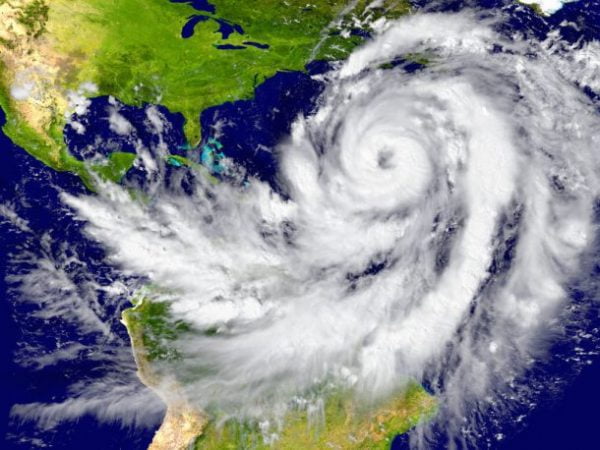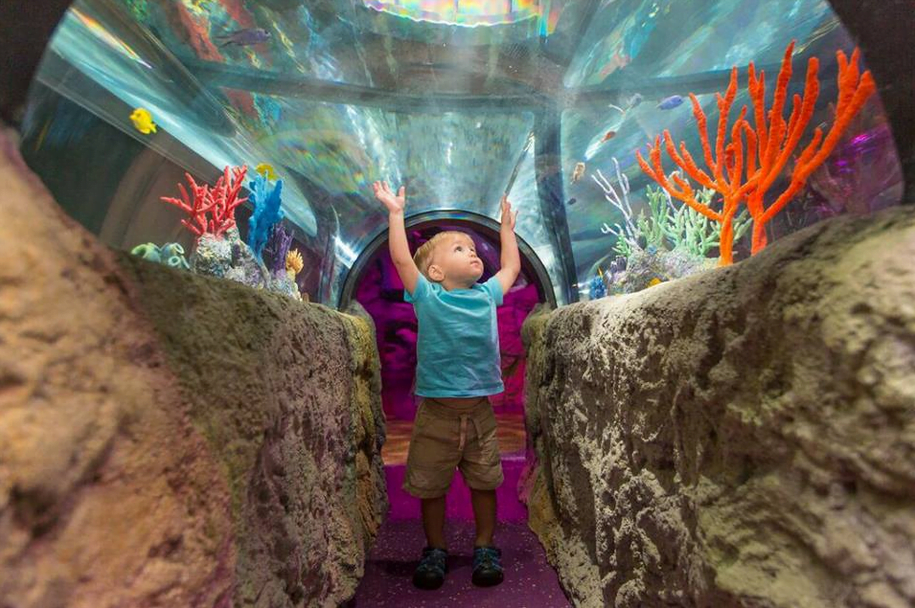It’s that time again. Another hurricane is upon us. You should take preparing for a hurricane seriously — but you shouldn’t buy a lot of things you’re never going to use.

Hurricane Dorian is NOT pictured above.
HOW TO PREPARE FOR A HURRICANE
The most likely effect of a storm, whether its a hurricane or not, is a power failure. That’s why hurricane preparation includes making sure you have enough necessities to last you more than a few days. That includes food, gasoline and cash.
When you shop for hurricane food, think about what you actually would eat that does not require refrigeration – bottled water, peanut butter, granola bars, canned beans, beef jerky, canned tuna, etc. Once hurricane season is over, you can eat up your stock and then buy new supplies next season.
The key to smart hurricane preparedness is to be ready without spending too much money.
Hint: You can avoid lines at stores if you shop online, but make sure your items can be shipped in time. An approaching storm can also delay shipping.
Refer to your Local County Hurricane guides:
- Seminole County
- Sign up for Alert Seminole
- Orange County
- Download app OCFL Alert
- Volusia County
- Sign up for Code Red
Things to do to prepare for a hurricane
Prepare and protect your home
If you don’t have impact-resistant windows, do you have shutters and do you know how to install them? You have a few days before the storm to make sure you have all the supplies and can actually put up your shutters. If you need help, look for it now. If a storm approaches, bring in anything that could become a projectile, such as lawn furniture and potted plants.
Wash all of your clothes and dishes as this task will be difficult without power or running water. Fill up your bathtub with water so you have a backup source.
Plan for your pets
You need to have crates, food, water and any medications your pets take. The county has pet-friendly shelters, but you need to reserve ahead of time. Think about your dog’s needs if he is trapped inside for hours and where he might be able to relieve himself.
Fill prescriptions
Make sure you have all the medications you’ll need for the next few weeks. If you wait until the last minute, you may find the pharmacy closed or your doctor unreachable. If your medications need refrigeration, or you have devices that require electricity, make plans for those now.
Fill your gas tank
Make sure you gas up your car before the lines start. If you have a gas-powered generator, you’ll also need gas for that.
Get cash
ATMs may not operate, and banks may be closed right after a storm. Credit card processing doesn’t work if there is no electricity. Make sure you have enough cash to buy food, water and any other necessities. You may also need cash to pay for help to remove debris and tree limbs after a storm.
Buy batteries, flashlights and lanterns
The new LED lanterns and flashlights put out a lot of light. Make sure you have the right batteries for your devices and they are still good. You may need batters for lanterns, flashlights, portable radios, a portable TV, fans, and other devices.
Buy food and water, but don’t go crazy
Don’t buy food that you would not eat if there weren’t a storm, because it is likely to be wasted. Fruit, cheese, crackers, peanut butter, canned tuna and salmon — buy the shelf-stable foods your family likes. If you have a grill, make sure you have charcoal or propane to operate it. If you buy canned food, make sure you have a manual can opener. If you have expensive food in your freezer, you might want to eat it before the storm hits.
- Fill plastic jugs with water and have an emergency supply of bottled water to drink after those jugs are gone. You need about a gallon per person per day.
- Remember that pets will need water, too.
- Save extra ice in bags to keep your food cold longer. Fill up Ziploc bags with 3/4 water and freeze while you still have electricity.
Back-up computer files and gather important documents
Make sure important documents such as birth certificates, passports and insurance policies are protected. Take them with you if you evacuate. Back up your computer files in case your computer gets wet or is damaged during the storm. You can use a cloud backup service or an external drive that you put in another location during the storm. Take pictures of all of your valuables, important documents, every room and the outside of your home. Put the images in a cloud or email them to yourself.
Have a plan to power your phone and other technology
Make sure you have a car charger, as well as fully-charged auxiliary power bricks for your phone. Charge up your laptop because that can be used to charge up devices too. Solar chargers are inexpensive, but be warned that they don’t work quickly.
If you still have an old-fashioned land line that comes through the wall, get a phone that doesn’t require electricity. A landline powered by VoIP, such as those provided by cable companies, will not work.
Smartphone apps for emergencies and disasters
During any type of disaster, phone and internet service may not be readily available. Keeping a few communication apps handy in addition to your regular landline and cellular service might keep you connected. It’s possible you will only have internet service at some point, and some apps are very useful for communications with neighbors and emergency responders.
Apps to download:
- Nextdoor. This app is kind of like Facebook for neighborhoods. Only verified neighbors who live in your neighborhood and city can see your profile. Neighbors on this app coordinated places to stay, meals, clothing, and other needs for those who had long evacuations and lost their homes.
- FEMA Mobile App. The Federal Emergency Management Agency, or FEMA, has a mobile app that includes alerts, disaster resources, and other useful information. With real-time alerts from FEMA and the National Weather Service, you may want to download this app far ahead of time just in case you need it.
Visit the National Hurricane Center website for more information.





